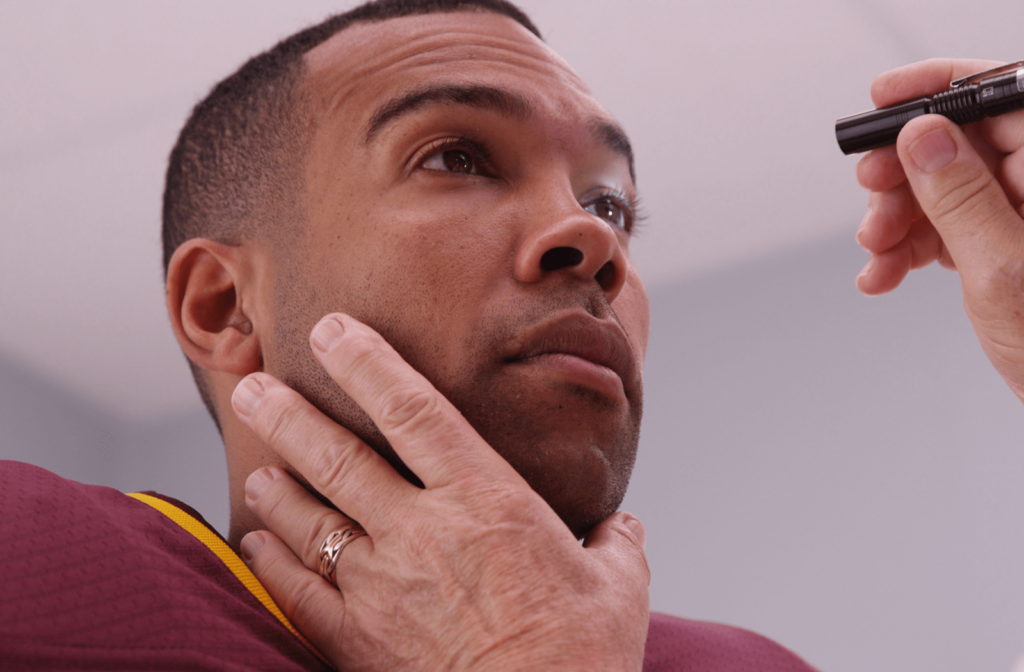During a comprehensive eye exam, your optometrist will likely screen you for glaucoma. This screening process usually includes fairly in-depth questions about your family’s eye health history.
One of the primary reasons for the questions is due to there being a hereditary component to your risk of developing glaucoma. It’s important to note that even if there is no family history of the condition, this doesn’t mean your risk is zero for developing it.
Keep reading as we discuss the common types of glaucoma, risk factors, and a few potential treatment options.
What Is Glaucoma?
Glaucoma is a term that describes a group of eye conditions that progressively affect the optic nerve. In most cases of glaucoma, internal eye pressure (referred to as intraocular pressure) is a significant cause of optic nerve damage.
The most common type of glaucoma (open-angle glaucoma) typically develops with little to no symptoms or vision changes. This highlights the importance of receiving comprehensive eye exams as recommended by your optometrist.
One thing to keep in mind is that glaucoma could eventually lead to vision loss or blindness if it’s left undiagnosed and untreated.
Types of Glaucoma
Before we look at glaucoma’s risk factors, including genetics, let’s look at two of the most common types of glaucoma.
Open-Angle Glaucoma
Most people who are diagnosed with glaucoma likely have open-angle glaucoma. This is typically a slower-developing form of the condition. There is usually a less immediate threat to a person’s vision too.
The optic nerve damage from this type of glaucoma is typically a result of the eye not draining fluid properly. When this happens, the intraocular pressure begins building. Unfortunately, because of how it develops, there aren’t usually any symptoms until the condition is well-developed.
Major symptoms of open-angle glaucoma include:
- Dark patches in your side vision (peripheral vision)
- Reduced vision in the centre
Closed-Angle Glaucoma
This form of glaucoma is less common but can be an emergency. Closed-angle glaucoma is sometimes called narrow-angle glaucoma. Essentially the iris blocks off the eye’s drainage canals. This leads to a quick and drastic pressure buildup that damages the optic nerve.
Unlike open-angle glaucoma, if you notice symptoms of this type, you should see an optometrist as soon as possible to avoid permanent damage and vision loss.
Symptoms of closed-angle glaucoma:
- Severe headache
- Upset stomach or throwing up
- Blurry vision
- Severe pain in your eye
- Coloured rings or halos around lights
- Red eyes
Less Common Types
There are a couple of other types of glaucoma. For example, some people’s optic nerve is sensitive to normal pressure and sustains damage. This is called normal-tension glaucoma. It has similar symptoms to the more common open-angle glaucoma.
Typically glaucoma is an age-related condition and the leading cause of blindness in people over 60. Still, there is something called early-onset or congenital glaucoma, where this condition develops as early as birth. Early-onset glaucoma must be dealt with promptly.
Glaucoma Risk Factors
As already mentioned, glaucoma appears to run in families. This is especially the case with early-onset or congenital glaucoma. But your eye doctor will typically consider several other risk factors, including:
- Previous eye injury or surgery
- Heritage and genetics
- Abnormal eye pressure
- Refractive errors like near or farsightedness
- Long-term use of steroid medication
- Thinning cornea
- Other medical conditions like diabetes, high blood pressure, or poor blood circulation
- Thinning in the optic nerve
- Age (risk typically goes up after 40)
Treating Glaucoma
There are a few potential treatment options that we’ll cover below. The severity of the condition and how far along it is are 2 significant factors in what your optometrist recommends for treatment.
Common treatments include:
- Prescription eye drops: The optometrist may prescribe several types of eye drops. Typically this is the first line of treatment, and they include drops to alter the eye’s fluid production or lower the intraocular pressure.
- Surgery: Only some people are candidates for laser eye surgery. But you can discuss surgery options with your eye doctor. A laser trabeculoplasty is typically a quick procedure in the optometrist’s office. Essentially, they use a laser to remove the blockage causing the fluid buildup.
- Drainage tubes: If the eye pressure cannot be maintained with surgery or prescription medication, your eye doctor may recommend small drainage tubes to ensure the eye drains without issue.
Discuss Treatment Options with Your Eye Doctor
If you’re experiencing any of the symptoms listed under closed-angle glaucoma, it’s important that you see your eye doctor as soon as possible for an eye exam. But even without troubling symptoms, you should still see the optometrist every 1 to 2 years, as recommended.
Give us a call or book an appointment at The Eye Care Centre. Our professional team is happy to answer your questions and schedule you for an appointment with one of our optometrists.



